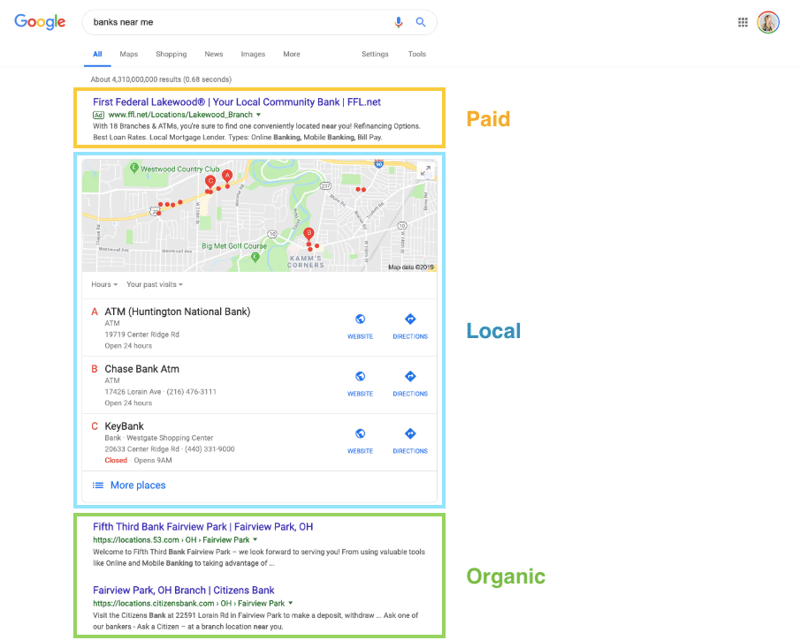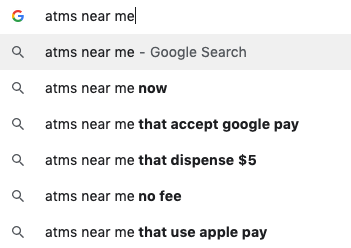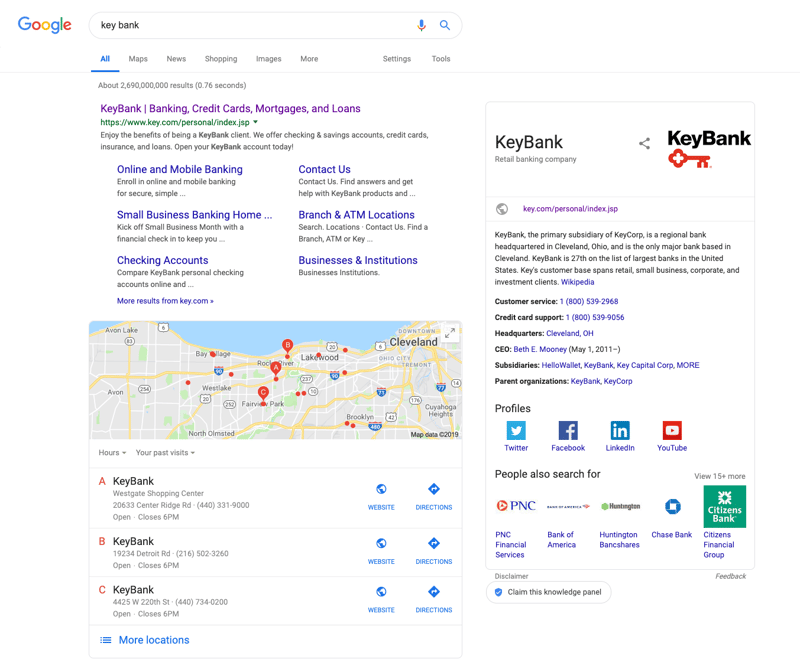
Why Local SEO Is Essential for Financial Companies
June 12, 2019
By Meg Andersen
Have you ever driven all the way to a business only to find that the location was closed for the day or had moved, even though Google showed that it was open? It’s incredibly disappointing, to say the least. Unfortunately, many companies have yet to grasp the importance of local search engine optimization (local SEO) and continue to enable these frustrating situations, whether they realize it or not. The good news is that optimizing your website for local search can have an immediate positive impact on your customer experience, lead generation, and bottom-line results.
The Purpose of Local SEO
The goal of local SEO is to rank for search queries that relate to a specific geographic area, such as “banks near me” or “best financial advisers in San Francisco.” Google is now perceived as a recommendation engine rather than just a search engine, meaning that users expect Google to suggest the most relevant and trustworthy results first, along with shortcuts for the most important actions, such as calling the business or getting directions to their location.
For localized searches, such as “bank near me,” Google will recommend top results based on relevance, prominence, and proximity to the user. Even if your company has just one brick-and-mortar location, optimizing your digital profile will help you rank higher in search results, increase traffic, and build trust with prospects and customers. Financial institutions with many locations have the larger task of maintaining accurate online listings for every office, branch, and even ATM, so that the information is consistent and reliable across channels.
Investing in local SEO benefits financial companies in a variety of ways, including the following:
The Benefits of Local SEO for Financial Companies
Greater Visibility in Search Results
The structure of a Google results page now shows a single paid result first, followed by what’s referred to as a “three-pack” of local listings, and finally the organic results. When optimizing your website for local SEO, the goal is to appear in the top three local listings, which will vastly increase the likelihood of users clicking on your business profile. In a study conducted by Moz, 44 percent of users clicked on a result in the local three-pack, indicating that they found those top three results helpful and did not need to click to view additional results.

The better your local SEO, the more likely it is that your locations will rank for top search terms, such as “best banks in [insert city]” or “ATM near me.” Additionally, the more information you can provide in your description, the more helpful it will be for users, and that could be the difference between them choosing your location or another. For instance, if one of your ATMs has specific capabilities, such as dispensing five-dollar bills, then including that information in your listing could help you win business over other ATMs—even if yours is farther away.

Even though Google considers banking to be a local service and includes banks and ATMs in the three-pack, many financial companies have been slow to seize this opportunity and optimize their online listings. By ensuring your digital presence is current and complete, you can edge out the competition by being more discoverable and accessible online.
Increased Traffic Online and in Person
According to data from Forbes, 70 percent of mobile searches lead to action within one hour. However, if your company’s online listing is missing key information—such as your phone number, website URL, hours of operation, or address—this could prevent users from taking that next step. This means you’re unintentionally turning away qualified leads who are nearby and have a clear interest in your services.
To take advantage of qualified traffic, financial companies should use local SEO to make it as effortless as possible for people to find the right information, map to the nearest location, or get in touch directly.
Here’s an example of a complete company profile for KeyBank.

Without clicking through to their website, I can easily find their customer service number, credit card support number, social media profiles, and the three closest branches to my location. This gives me confidence in their brand and makes it easy for me to take a variety of actions without having to hunt for more information.
Tip: The more information there is on the knowledge panel (the card on the right-hand side of the results page), the more users will trust your brand.
A Better Brand Experience = Increased Trust and Customer Loyalty
Now that our financial lives can be managed almost entirely from our smartphones, the primary brand experience has shifted to the digital world. This trend makes it more important than ever for financial companies to evaluate the online experience they are creating and consider how it can be improved on every channel. Every touchpoint counts, whether it’s a current customer looking up the weekend hours for their branch or a prospective customer searching for highly rated financial advisers in the area.
Local SEO is critical to creating a consistent brand experience and building trust with prospects and customers at every point in the Buyer’s Journey.
Conclusion
Local SEO is an essential part of an effective digital marketing strategy for financial companies. Optimizing your online presence for local search increases discoverability, boosts traffic and lead generation, removes barriers to action, and builds trust and confidence in your brand. For more tips on boosting your SEO, check out the guide below!

About the author
Meg Andersen was formerly an Inbound Marketing Senior Specialist at SmartBug. She is passionate about using digital marketing to create meaningful experiences and build stronger connections between organizations and their stakeholders. Read more articles by Meg Andersen.








